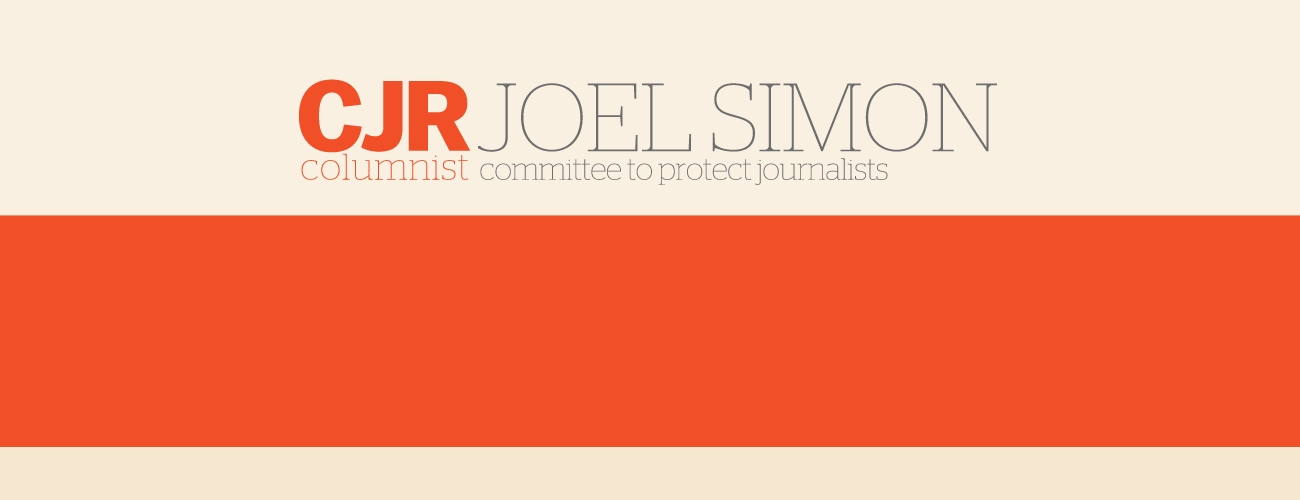Just under a year ago, Donald Trump was sworn in as the 45th president of the United States. How should we assess his press freedom record so far?
During his campaign, Trump excoriated the media and lashed out at individual reporters. He promised that if elected he would make it easier to sue the media for libel. He intimated that critical broadcasters might not get their license renewed. He suggested that he would go hard after leakers.
ICYMI: The New York Times made a decision that infuriated readers
In response to these threats, a group of around 30 press freedom organizations (including CPJ, where I work, and CJR, where this column is published) came together soon after the election to create a new database and website dedicated to documenting every serious press freedom incident in the United States. A year into the Trump administration, here are the headlines from the Press Freedom Tracker:
- Journalists have been arrested 34 times in the United States in the last year.
- Twenty-nine of those arrests were at protests. These occurred in Standing Rock, where protests erupted over the Dakota Access pipeline; in St. Louis, where people took to the streets in response to a police shooting; and in Washington, DC, where there were sizable protests during Trump’s inauguration.
- Nine of these journalists were charged with felonies. At least one case went to trial.
- Fifteen journalists have had their equipment seized.
- Forty-four journalists have been physically attacked in the last year. The attackers span the political spectrum, from white nationalists to anti-fascists.
Because this data covers only 2017, it’s not clear how it compares with previous years. But the numbers are certainly alarming. In fact, around the world there was so much concern that leading international press freedom organizations recently carried out an unprecedented press freedom mission to the United States. Among the participating groups were IFEX, Reporters Without Borders, Article 19, the International Press Institute, and Index on Censorship, along with CPJ.
When the delegation visited St. Louis, they found that journalists who had been covering the protests have been squeezed between aggressive police and angry demonstrators. With fewer resources, and a governor who stonewalls the press, it’s become harder to cover the political beat. None of the journalists attributed the shifting climate directly to Trump or his anti-media outbursts, but suggested that the heated rhetoric exacerbates a longer-term trend going back years. In Houston, where members of the international delegation also traveled, journalists described a certain level of mistrust and hostility but also said they felt energized to be working in the current climate. One journalist described 2017 as “the best year since Watergate.”
ICYMI: The Wall Street Journal unleashes a bombshell report
While the data suggests the climate has become extremely difficult for journalists covering protests, it also shows that the legal assault that Trump promised to wage against the media has not materialized. In fact, only one legal case has been documented on the Tracker. NSA contractor Reality Winner is facing prosecution for allegedly leaking documents about Russian efforts to hack last year’s presidential election to The Intercept. By contrast, the Obama administration launched an unprecedented war on leakers, with eight prosecutions under the 1917 Espionage Act—more than all other previous administrations combined.
While it is good news that there have been few lawsuits thus far, prosecutors have taken an extremely aggressive approach in the Winner case, which is troubling. There’s also a high probability that additional leak investigations are on the horizon. Attorney General Jeff Sessions says he is pursuing 27 leak investigations. If they go forward, journalists who refuse to testify could end up in jail. While Trump does not have the power to change libel laws, he may find other ways of putting regulatory and legal pressure on the media.
The confrontations between Trump and reporters covering the White House make great television and define perceptions in the US and around the world. And it’s no small matter that several members of the White House press corps, including Jim Acosta and April Ryan, have received death threats. But the situation confronting American journalists outside the media hubs in New York and Washington is more nuanced. The legal environment, while troubling, is still evolving.
But one aspect of the Trump press freedom record has already come into focus. As Senator John McCain put it in a recent Washington Post op-ed, “Trump’s attempts to undermine the free press … make it more difficult to hold repressive governments accountable.” Leaders from more than a dozen countries, including Russia, Turkey, Egypt, Myanmar, China, and Cambodia, have embraced the term “fake news” and used it to delegitimize critical journalism that they don’t like. Of the record 262 journalists in prison around the world at the end of last year, 21 are imprisoned for publishing “false news,” more than double the previous year.
Where the Trump effect has played out most dramatically is outside the borders of the United States. The president’s overheated rhetoric attacking the media has weakened global norms, eroded US influence, and emboldened repressive leaders who are jailing critical journalists at a record rate.
*Image via Wikimedia Commons
TRENDING: The real reason why journalists hate the new White House book
Joel Simon is the founding director of the Journalism Protection Initiative at the Craig Newmark Graduate School of Journalism.

